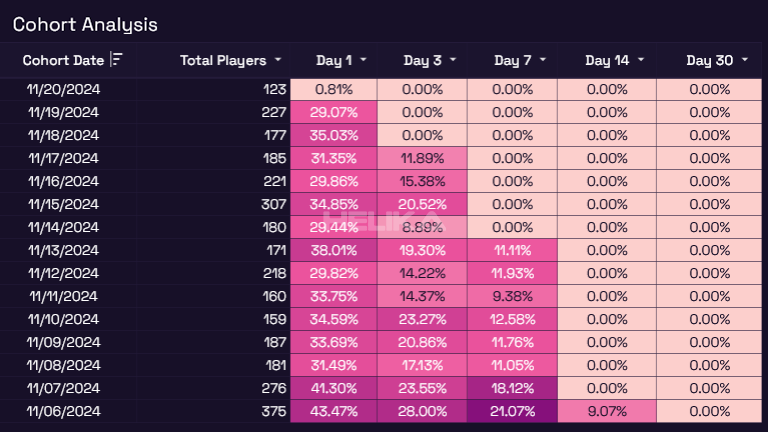The Ultimate Hookup Guide
Explore expert tips and advice on navigating the world of modern dating and hookups.
Player Segmentation Research: Why Ignoring Data Is Like Playing Blindfolded
Unlock the secrets of player segmentation! Discover why ignoring data is like playing blindfolded and learn how to game smarter today!
Understanding Player Segmentation: The Key to Effective Game Design
Understanding player segmentation is essential for game designers aiming to enhance player engagement and satisfaction. By categorizing players based on their preferences, behaviors, and motivations, developers can create more tailored gaming experiences. For example, players can be segmented into groups such as casual gamers, who prefer easy-to-learn mechanics and quick play sessions, and hardcore gamers, who seek deep strategies and complex narratives. This targeted approach not only improves gameplay dynamics but also increases retention rates as players feel more connected to the game.
Additionally, leveraging player segmentation allows designers to implement specific features and marketing strategies that cater to distinct player types. For instance, introducing unique rewards systems for different segments can enhance player motivation and drive engagement. By applying techniques such as surveys and analytics, developers can gather valuable insights into player behaviors, ultimately leading to a more refined gaming experience. Embracing this data-driven approach fosters a deeper understanding of what players want, ensuring a successful and enjoyable game launch.

Counter-Strike is a popular tactical first-person shooter that requires teamwork, strategy, and precision. Players can choose between different game modes and maps, with the primary objective often centered around bomb defusal or hostage rescue. For many, the excitement of competitive play is enhanced with various promotions and bonuses, like the roobet promo code, that can add extra value to their gaming experience.
Top 5 Reasons Why Player Data Should Drive Your Development Strategy
In today's competitive gaming industry, understanding your audience is paramount. This is why player data should be at the forefront of your development strategy. First and foremost, utilizing player data allows developers to tailor gameplay experiences that resonate with their users. By analyzing behavioral patterns, preferences, and feedback, developers can create features and content that engage players, ultimately leading to increased retention rates. For instance, a game that personalizes quests based on player skills and preferences can keep users invested for longer periods.
Additionally, leveraging player data can drive marketing strategies and game monetization. Developers can segment their audience based on in-game behavior, allowing for targeted promotions that appeal to various demographics. This ensures that marketing efforts are not only effective but also efficient, as resources are directed towards user bases that show the most potential for conversion. In a nutshell, integrating player data into your development strategy equips you with the insights needed to create a more compelling and profitable gaming experience.
How to Use Player Segmentation to Enhance User Engagement and Retention
Player segmentation is a crucial strategy for increasing user engagement and retention in the gaming industry. By categorizing players based on their behavior, preferences, and playing habits, developers can create tailored experiences that resonate more deeply with different audience segments. For instance, you might segment your players into casual, intermediate, and hardcore categories. This allows you to design personalized marketing campaigns and in-game events that cater specifically to each group's unique interests, thus fostering a deeper connection and enhancing overall satisfaction. To achieve this, consider utilizing data analytics tools to gather insights on player interactions and demographics.
Once you have established your player segments, it is essential to implement targeted communication strategies that address their specific needs and motivations. For example, you can create exclusive rewards or challenges for hardcore players who seek advanced gameplay, while offering simple tutorials and engaging content to casual players who may prefer a more laid-back experience. Additionally, consider using push notifications or personalized emails to share relevant updates and promotions, which can lead to improved engagement rates and higher retention. Remember, the key to successful player segmentation lies in continuously analyzing player feedback and adapting your strategies accordingly.